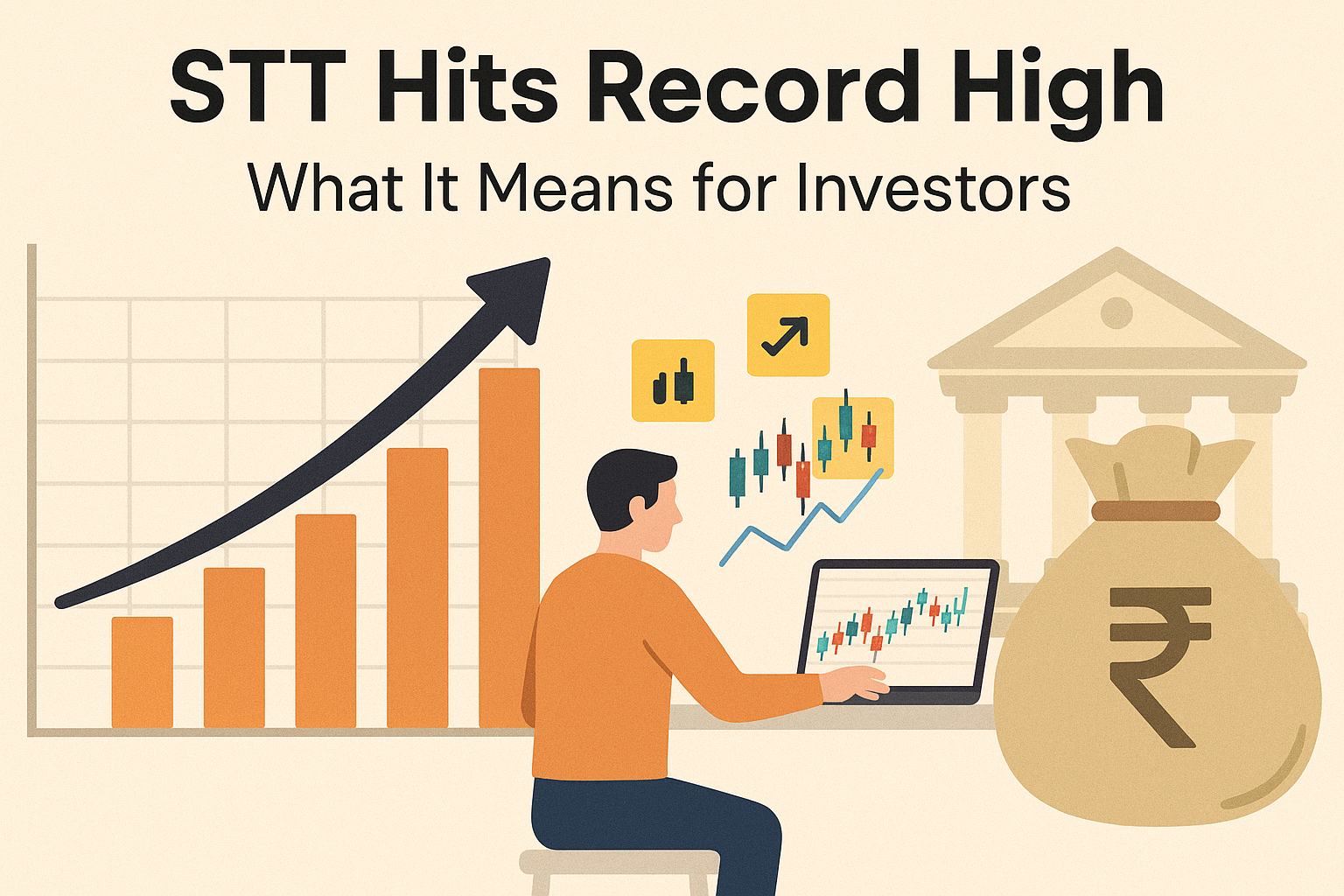Announcement: Lorem ipsum dolor sit amet, consectetur adipiscing elit. Donec et quam blandit odio sodales pharetra.
With STT becoming a revenue cash cow, it is now here to stay
As of the end of Jan-22, the collections from Securities Transactions Tax (STT) for FY22 stood at Rs.19,200 crore. This is a record of sorts and it will be biggest ever year for STT collections. How did it happen and what does it really mean?

Table of Contents
Ease of administration
Since the time STT was first launched in India in 2004, it has been controversial due to its potential to disrupt volumes and liquidity. However, that is not borne out by data as volumes have picked up sharply in the last 18 years. Amidst all the hue and cry, the only reason that STT continued in India, was the ease of administration and collection with little scope for leakages. That is the reason it was persisted with over the years.
Big boost in last couple of years
For a long time, the STT struggled to generate $1 billion in a full year for the government in the form of revenues. In FY21, the contribution of STT to total government revenues increased to near $2 billion. However, in just one year i.e., in FY22, the total STT collections are expected to scale well beyond $3 billion. What has led to this transformation. One key driver was the massive rise in retail participation. With over 8 crore demat accounts, over 10 crore trading accounts and over 5 crore MF SIPs, it was clear that retail participation in the equity markets was driving the surge in STT collections since 2020 in a big way.
Beating estimates by a margin
For FY22, the original estimate of STT collections was around Rs.12,000 crore. This was later revised up to Rs.20,000 crore. Now with over Rs.19,200 crore collected via STT in the first 10 months, it looks like Indian government may end up with overall STT collections in the vicinity of Rs.23,000 crore for the full year FY22, or a tad above $3 billion. In the past, the rise in volumes was driven by index options and futures, which had the lowest level of STT rates. This time around, the biggest boost is visible in the equity volumes; largely from retail investors, which explains why the center is laughing all the way to the bank in terms of the STT collections for FY23.
That means, STT is here to stay
Sounds rather morbid to say, but the fact is that with such lucrative potential, the STT is now well and truly here to stay. In last 25 years, the center had 3 stupendous taxation ideas viz. service taxation, excise on oil and STT. The first two may be much bigger in terms of overall contribution to the exchequer, but at $3 billion, STT is significant. What this means is that the government has finally perfected the art of enhancing tax from the markets, something the capital gains tax could never manage to do. Also, STT automatically regulates and keeps an audit tab on flows that grow with equity participation. It also means that this simple STT is here to stay!
Comments